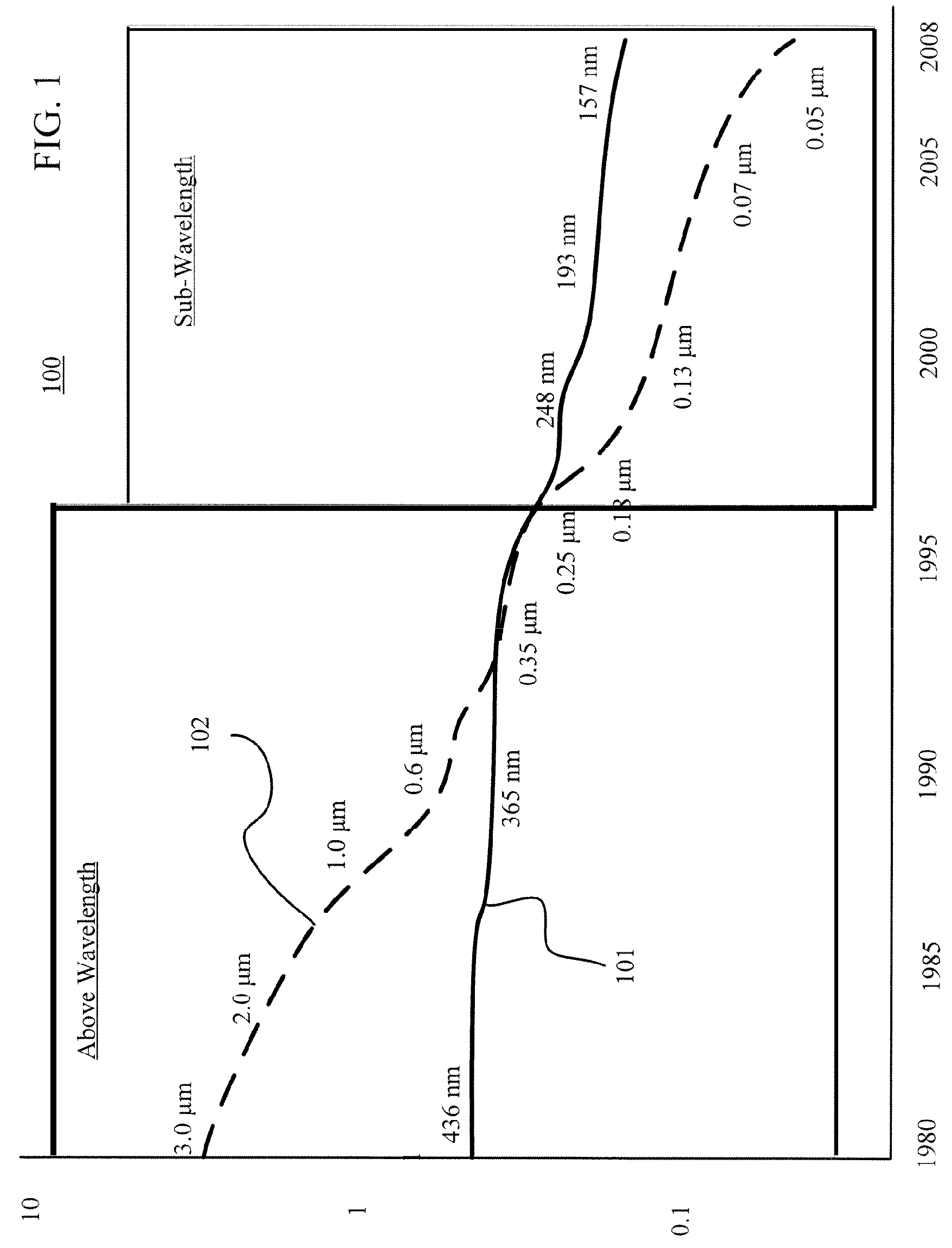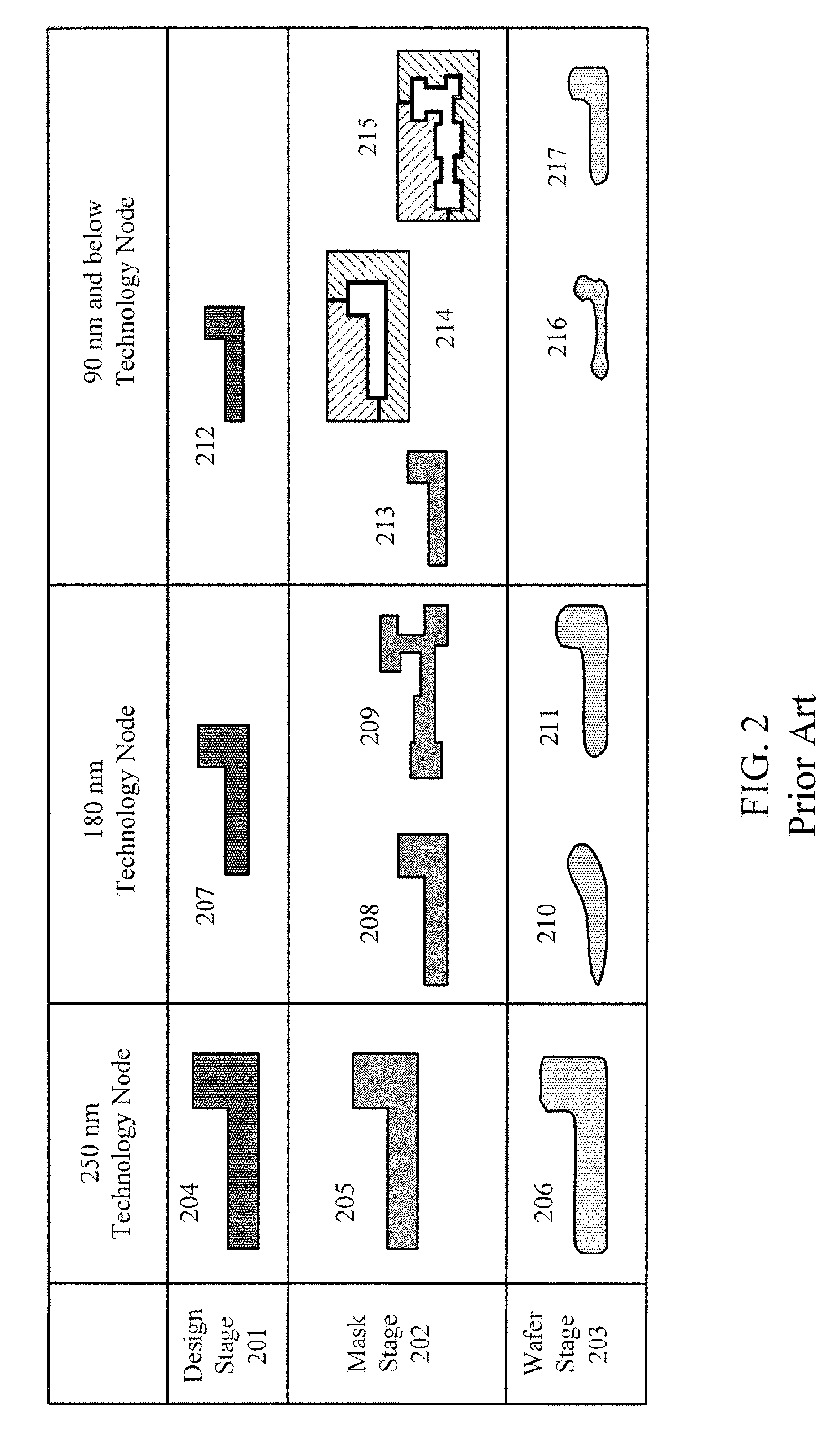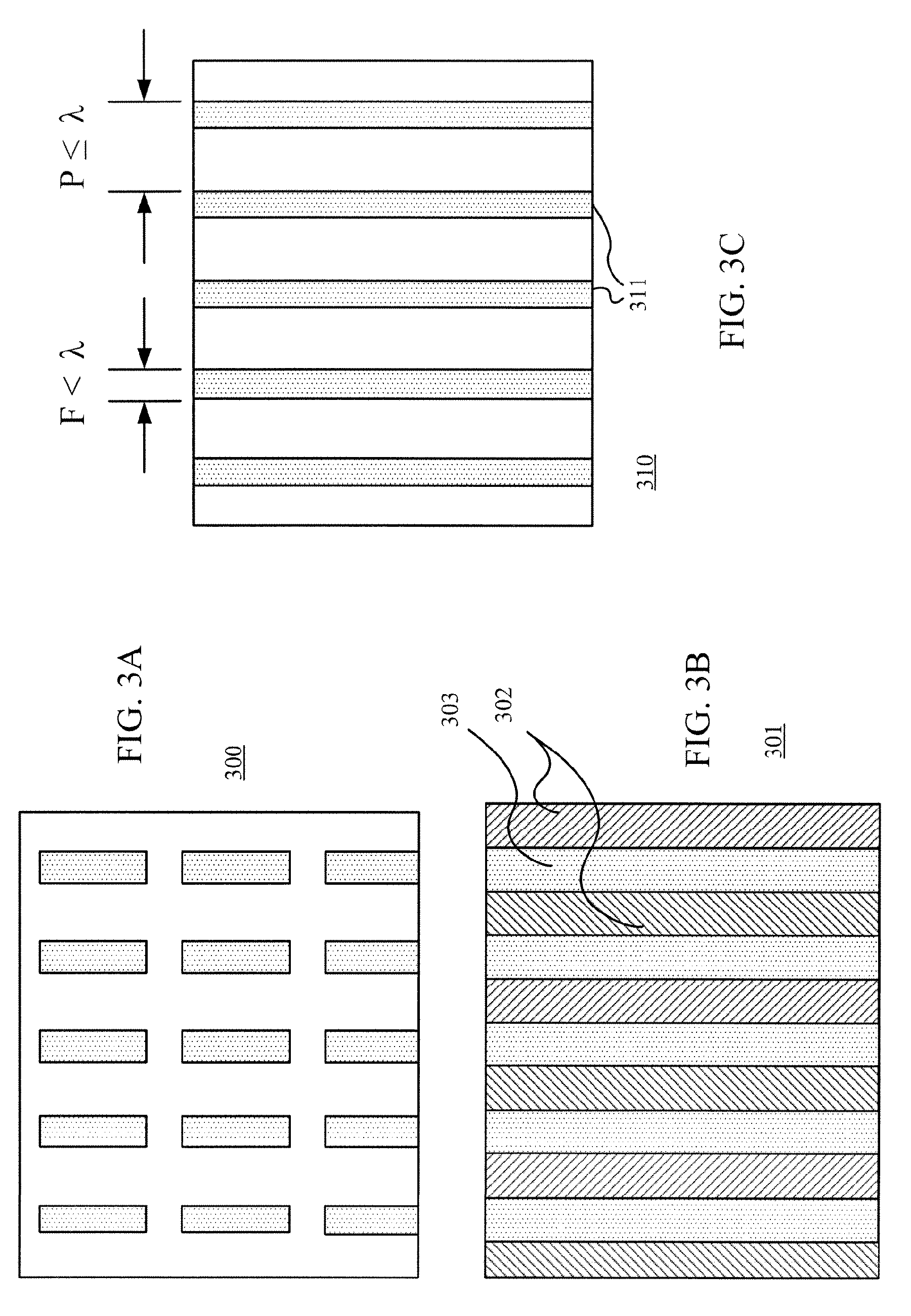Patterning a single integrated circuit layer using multiple masks and multiple masking layers
a technology of integrated circuits and masks, applied in the field of forming features of integrated circuits, can solve the problems of phase shifting alone generating only poorly defined wafer features, requiring yet more complex layout patterns at the mask stage, and leaving the photoresist coating unexposed in these regions, etc., to achieve the effect of facilitating the use of rets, improving yield and small feature siz
- Summary
- Abstract
- Description
- Claims
- Application Information
AI Technical Summary
Benefits of technology
Problems solved by technology
Method used
Image
Examples
Embodiment Construction
[0036]Notably, for each integrated circuit (IC) layer, many of the features can be characterized as having a periodic (or at least a quasi-periodic) pattern. This periodicity can be advantageously leveraged in simplifying the patterns transferred to multiple masking layers on the wafer. As discussed above, any bends or corners on a mask feature at sub-wavelength technology nodes can significantly deteriorate pattern fidelity on the wafer. Therefore, using a simplified pattern on a mask (or for any pattern transfer tool) can facilitate optimized resolution of the (quasi-)periodic pattern on the wafer.
[0037]For example, in one embodiment, a first mask can be used to define one or more geometrically regular fine-line patterns in a first masking layer on the surface of the wafer. Notably, each feature defined by the first mask is sub-wavelength i.e. its width is less than the wavelength of light used to form that feature, and therefore is called a fine-line feature herein.
[0038]FIG. 3A ...
PUM
| Property | Measurement | Unit |
|---|---|---|
| size | aaaaa | aaaaa |
| feature size | aaaaa | aaaaa |
| width | aaaaa | aaaaa |
Abstract
Description
Claims
Application Information
 Login to View More
Login to View More - R&D
- Intellectual Property
- Life Sciences
- Materials
- Tech Scout
- Unparalleled Data Quality
- Higher Quality Content
- 60% Fewer Hallucinations
Browse by: Latest US Patents, China's latest patents, Technical Efficacy Thesaurus, Application Domain, Technology Topic, Popular Technical Reports.
© 2025 PatSnap. All rights reserved.Legal|Privacy policy|Modern Slavery Act Transparency Statement|Sitemap|About US| Contact US: help@patsnap.com



